- Home
- slideshows
- miscellaneous
- Aviators share the lore of the US Navy's iconic and exclusive bar that inspired the 'Top Gun' sequel
Aviators share the lore of the US Navy's iconic and exclusive bar that inspired the 'Top Gun' sequel
The World Famous I-Bar has existed in an official capacity since the 1950s but has served as an unofficial aviator hangout since the 1930s, according to Capt. Tim Slentz, commanding officer of Naval Base Coronado, which includes Naval Station North Island.

Model airplanes, many of them built by legendary former bartender Walter Simmons, decorate the ceiling.
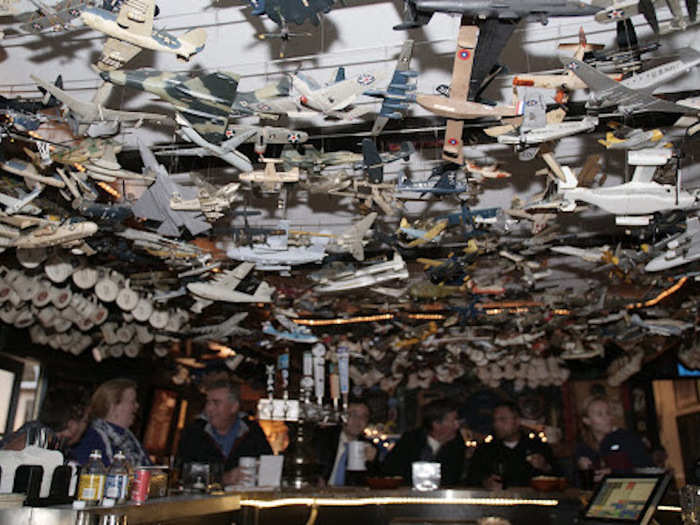
The I-Bar "was a legend even back in 1962," the first time Chuck Sweeney set foot there.
Sweeney, a Tailhook pilot and Vietnam veteran, was instrumental in getting the look and feel of the renovated I-Bar right — and rallying community support around the project.
"What everybody was worried about was all these plaques and these planes, and they were all going to have to come down when the remodeling was going on and then they were going to have to go back up, and everyone was afraid that wasn't going to happen," Sweeney said.
Slentz understood patrons' concern.
"It reminds them of their youth," he said, "when they were wearing flight suits and telling their stories."
But with Sweeney's buy-in, the I-Bar's spirit is still very much intact, even if a few things have moved around.
"It's fantastic," Sweeney said of the final result. "Yes, it looks different, but the essence is absolutely there."
One of Chuck Sweeney's three Distinguished Flying Crosses hangs on the wall of the I-Bar.
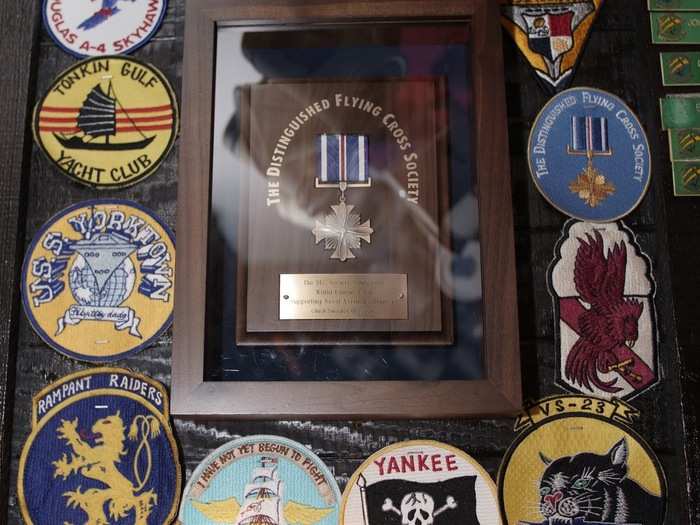
Sweeney was awarded three Distinguished Flying Crosses in one week for his actions in Vietnam — including saving the life of a squadron mate who had landed in waters near North Vietnamese territory.
Sweeney told Insider he heads to the I-Bar about every third Friday to chat with active-duty aviators.
The I-Bar has several unique traditions — mostly centered around getting patrons to buy a round for the rest of the house.
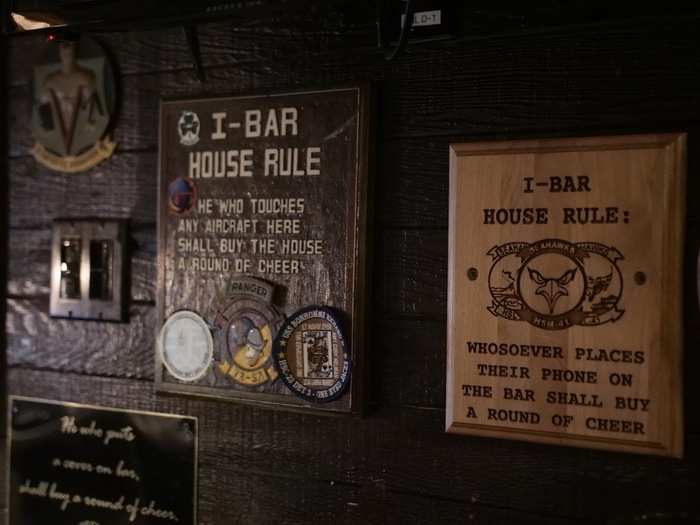
"You, of course, must remove your 'cover' — Navy's term for the uniform hat we wear — prior to entering. You also aren't allowed to place your cover on the bar, place your phone on the bar, or answer your phone while at the bar," said Guy Snodgrass, a former TOPGUN instructor and author of the book "Holding the Line: Inside the Pentagon with General Mattis."
"Committing any of the above offenses results in buying drinks … for the entire bar."
Ringing the bartenders' bell or touching any of the airplanes hanging from the ceiling is also prohibited, Slentz told Insider, although Sweeney said patrons would sometimes try to goad each other into putting their hands on the low-hanging planes.
When an errant patron breaks the rules, the bartender rings this bell to signify the infraction, and indicate that he or she owes the bar "a round of cheer."
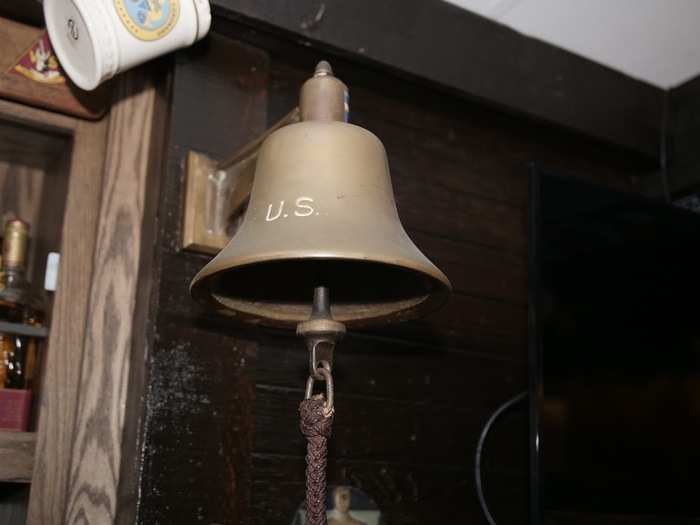
More serious infractions rarely occur, Slentz told Insider.
"It's very well self-policed," Slentz said, adding that the bar doesn't actually have a bouncer and that bartenders are quick to cut off patrons who have imbibed too much or are getting too rowdy.
"The old image of the drunken aviator in the '80s, that is not like that anymore," he said. "I couldn't even tell you the last time there was a fight at the I-Bar."
Slentz told Insider his favorite object in the bar is this mirror, which was uncovered during the renovation. Discolored by nicotine when smoking was allowed indoors, the mirror itself is covered by squadron decals from years gone by.

"It's an icon," Sweeney said of the mirror.
Nearby, he said, hangs a black-and-white photo of beloved bartender Walter Simmons in front of that very mirror.
Patches from the production of "Top Gun: Maverick" adorn the bar.
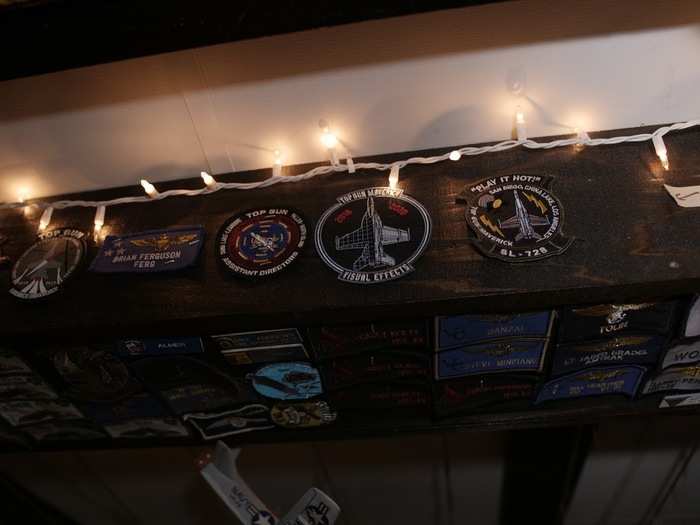
Slentz told Insider that the "Top Gun" crew was friendly and warm and worked hard to recreate the mood of the I-Bar in the movie's beach bar, The Hard Deck.
The bar itself was too small to accommodate the cast and crew — otherwise "I really think they would have done it in the I-Bar if they could" Slentz said.
Some even came to the bar to hang out after their workdays were done — although Maverick himself, Tom Cruise, wasn't among them.
"We brought him in there just by himself to see it," Slentz said, calling Cruise "super nice" and "respectful."
But lots of crew members "just loved coming by the I-Bar," according to Slentz.
"I think they felt like they were family when they left," he said.
One of the changes Slentz made was to bring in a cross deck pendant, also known as an arresting wire, just like ones used to slow aircraft landing on carriers, as a footrest on the bar. "We really tried to make sure that the modern upgrades we made had a nostalgic feel to them."
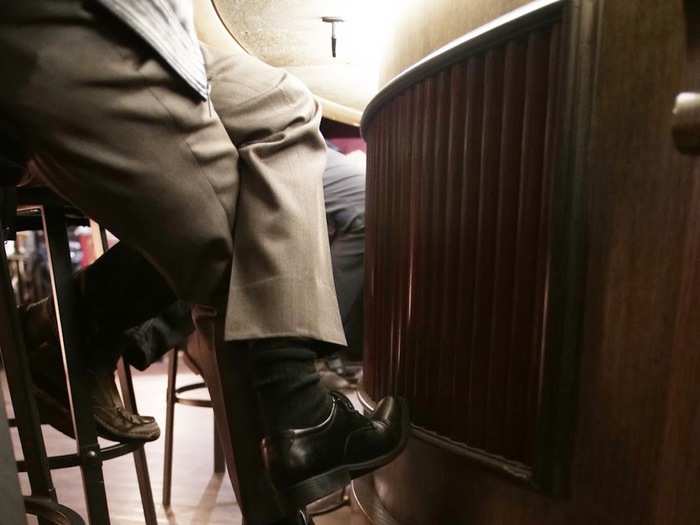
"Naval Air Station North Island is where the Navy got our first pilot," Slentz said, calling the base the "hallowed ground" for naval aviation.
Slentz called the I-Bar "a living museum to Naval aviation," with legendary patrons like Sweeney, some of the Apollo astronauts, and Dean "Diz" Laird, the only naval aviator in World War II to shoot down both German and Japanese aircraft.
"That's walking history right there."
Popular Right Now
Popular Keywords
Advertisement